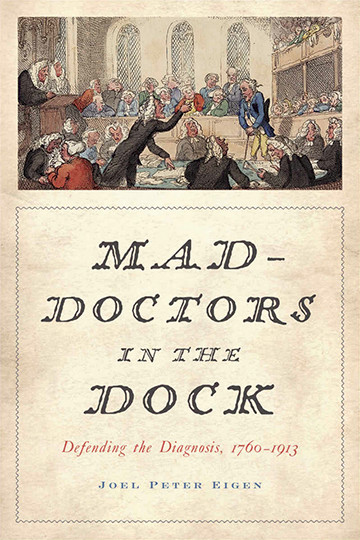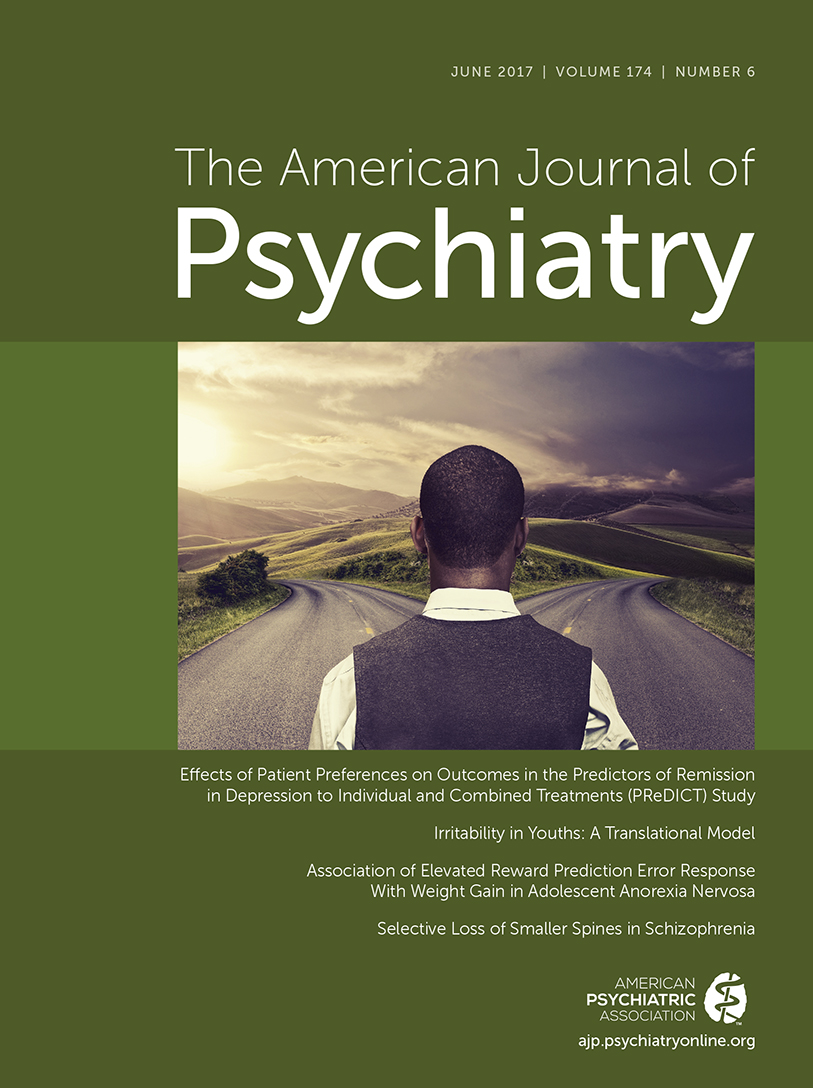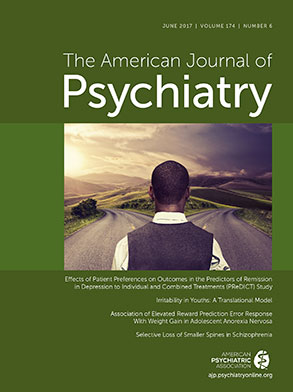The origin of the field of forensic psychiatry can been viewed through many lenses (
1). While the sociological lens focuses on the social context and the interaction between historical actors (such as criminals, judges, medical professionals, and the jury), forensic psychiatry when viewed through the lens of the history of medicine and law is seen as evolving out of advances in medical knowledge, the changing conceptualization of psychiatric disorders, and changing legal standards.
In Mad-Doctors in the Dock, Joel Peter Eigen brings his expertise as a sociologist to bear on a question: Why was the diagnosis of “homicidal mania” accepted as a valid exculpatory diagnosis for the insanity plea in late 19th- and 20th-century courtrooms, when similar constructs such as “moral insanity,” “lesion of the will,” and “irresistible impulse” were dismissed by jurists in the late 18th century?
This book is the last of a trilogy on the history of jurisprudence and the role of medical experts in the courtrooms of Victorian London between the late 18th and the early 20th century. The information for the book is derived from roughly 1,000 verbatim courtroom narratives of trials where the mental health of the defendant was in question (a subset of the so-called Old Bailey Sessions Papers). Interestingly, these papers were printed by commercial publishers to be sold on the streets of London the day after a trial and therefore were intended to be sufficiently detailed and interesting for readers of the time.
The book comprises seven chapters that take the reader back in time to an era when the punishment for theft was the death penalty and traces the evolution of medical professionals as expert witnesses in matters of mental health and culpability. The author uses the first five chapters to set the stage for the crux of his inquiry: the evolution of the diagnosis of “homicidal mania.”
The book begins with an overview of the harsh legal standards of the 18th century and the evolution of concepts (novel for their time) such as the presence of a defense attorney, the procedure of cross-examination, and the standard of guilt beyond reasonable doubt, thereby setting the stage for the arrival of “medical men” as expert witnesses on matters related to competence and culpability. Chapter 2 showcases the array of medical terms that began to find their way into courtrooms and that were intended to explain criminal behavior and invoke the insanity plea. Chapter 3 delves into the variability in what constituted a medical expert in the courtroom, focusing on the varied training of such persons (ranging from prison surgeons and practitioners of psychological medicine to apothecaries, authors, and lecturers) and how this created a need for an expert opinion in the courtroom. Chapters 4 and 5 provide rich details of the role of “medical men” as experts on matters of insanity, as well as the challenges they faced in having to make a diagnosis based on prison interviews and to subsequently defend the diagnosis on the stand in the absence of objective tests to prove insanity.
Chapters 6 and 7 delve into a discussion of the diagnosis of “homicidal mania,” a diagnosis that required the commitment of a crime (i.e., homicide) as a prerequisite, and the court’s reception of the same. The author makes the provocative claim that the diagnosis of “homicidal mania” was created in courtrooms by “medical men” who used diagnoses to claim unique knowledge beyond the grasp of the layperson and that the diagnosis emerged within the context of interactions between the “medical men” and other professionals (such as attorneys and asylum superintendents), a judicial system that sought to prosecute criminals, and against the backdrop of sociocultural anxieties surrounding the notion of biological degeneracy that was rife at the time. The book ends with an overview of the social and cultural factors of the time that may have contributed to the evolution of forensic psychiatry in the courtrooms.
Once the reader looks past the anachronistic usage of stigmatizing terms such as “madmen,” “mad-doctors,” “lunatic,” “deluded,” and “alienist,” the reader will catch a rare glimpse into a bygone era of the early practice of forensic psychiatry. Peppered with verbatim exchanges between the medical expert and defense attorneys, details of criminal cases of the time, and references to historic cases such as those of James Hadfield (in which “delusion” was first used as an insanity defense) and of Daniel M’Naughten (that led to the eponymous M’Naughten Rule), the book makes for interesting reading.
While the book provides a compelling sociological perspective, what it lacks is a more in-depth perspective from the history of medicine and law that tracks parallel advances in psychiatry (such as the evolution of Esquirol’s work on “homicidal monomania” [
2]) and changes to legal standards that contributed to the emergence of forensic psychiatry. It is likely that such a hybrid historiographic strategy may provide a more accurate picture (
1). Nevertheless, the book is a worthwhile read for psychiatrists interested in the history of forensic psychiatry.


